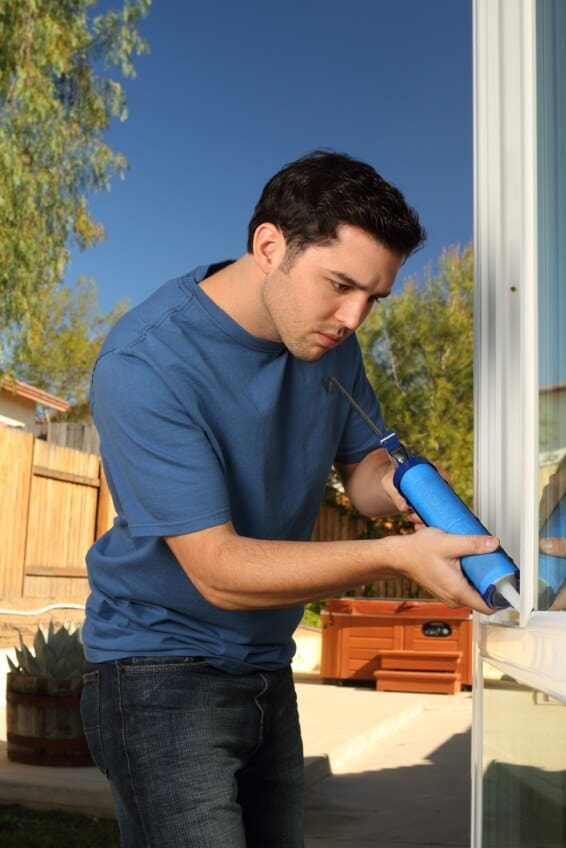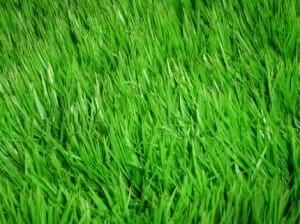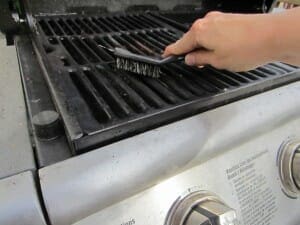Most insurance companies now require a signed report showing that an empty vacation home has been checked once or twice a month during the off-season.
Goldstar cleaning crews will combine their housekeeping visit with an insurance security check, and record the date, time, and results of their visit so you can send a clear record to your insurance company.
This means you get to enjoy your vacation time without worrying about cleaning – and it could save your house insurance premiums from rocketing if you need to claim repairs.
Security checklist
Goldstar cleaning crews routinely check for:
• Open or unlocked windows and doors all around the building
• Signs of an attempted break-in or vandalism
• Lights or appliances that have accidentally been left on, causing high energy bills and a risk of fire.
• Broken or incorrectly programmed heating systems, which could cause your pipes to freeze in winter
• Sounds or signs that there might be a water leak or damage
• Early signs of rodent or pest infestation
They also:
• Flush each toilet and scrub the water line to avoid build-up of limescale
• Check all lights to make sure no bulbs have blown
• Can carry out deep cleaning tasks, such as carpet or furniture steam cleaning
Potential damage
Goldstar owner Jill Barclay has seen firsthand the damage that can be caused by a small problem that is left unnoticed for weeks.
“I knew one client who started using our services after a pipe in their basement burst, causing thousands of dollars of damage.
“When they last visited the home it would only have been a small drip in the water filtration system that they didn’t notice, but during the summer the pipe burst, flooding the entire basement.
“Unfortunately because they hadn’t used any kind of security check contingency plan, the insurance was cancelled and they had to cover the huge cost of the damage themselves.”
Rental peace of mind
When you rent out your vacation home, it’s particularly important to make sure everything is in good shape before your renters get there, says Jill.
“At another of our client’s homes, snow had piled up against a plexi glass barrier around the deck, causing it to shatter and making it unsafe to use.
“We came round to check the vacation home ahead of a rental, and were able to clean it up and get it replaced before the renters got there, which meant the owners didn’t have to cancel the booking or deal with poor reviews of their rental vacation home.”
Contact Goldstar now to arrange for a personalized quote to clean and check your home.
 Is 2013 the year you resolved to keep your house tidy? With planning, a bit of extra effort and these six tips to start you off, you can succeed where your 2012 diet failed.
1. Start with a clean slate. Get a leg up on your new cleaning regiment by bringing in professionals to tackle major jobs, like cleaning the stove or scrubbing floors. Once your home is spic and span, make it your resolution to keep it that way.
2. Make a cleaning plan. The best resolutions have clear, concise goals and a timeline to accomplish them. Check out the 2013 New Year’s Cleaning Grand Plan Challenge, a 14-week program by the Organized Home web blog, for a step-by-step schedule, as well as cleaning tips and tricks.
3. Invest in tools to make cleaning easier. Often, it’s the simple things that help keep a space clean: a cover for the microwave, baking soda for the fridge, automatic cleaners for toilet and shower. And let’s not forget that industrious robotic helper, the Roomba. It cleans your floors while you’re away, then recharges itself automatically.
4. Clear that clutter. The post-Christmas season is a good time to take stock of your living space. Has paperwork taken over your desk? File it away. Ages-old condiments in the fridge? Toss ’em. Invest in storage containers to put away odds and ends.
5. Tackle cleaning one chore at a time. With any New Year’s resolution, the quickest route to failure is to tackle too much at once. Resolve to set aside just fifteen minutes per day to clean your home, focusing on one room at a time.
6. Reward yourself for a job well done. Resolve to treat yourself whenever you reach a milestone on your cleaning plan. A new flat-screen TV would look great mounted of the wall of your squeaky clean living room.
Is 2013 the year you resolved to keep your house tidy? With planning, a bit of extra effort and these six tips to start you off, you can succeed where your 2012 diet failed.
1. Start with a clean slate. Get a leg up on your new cleaning regiment by bringing in professionals to tackle major jobs, like cleaning the stove or scrubbing floors. Once your home is spic and span, make it your resolution to keep it that way.
2. Make a cleaning plan. The best resolutions have clear, concise goals and a timeline to accomplish them. Check out the 2013 New Year’s Cleaning Grand Plan Challenge, a 14-week program by the Organized Home web blog, for a step-by-step schedule, as well as cleaning tips and tricks.
3. Invest in tools to make cleaning easier. Often, it’s the simple things that help keep a space clean: a cover for the microwave, baking soda for the fridge, automatic cleaners for toilet and shower. And let’s not forget that industrious robotic helper, the Roomba. It cleans your floors while you’re away, then recharges itself automatically.
4. Clear that clutter. The post-Christmas season is a good time to take stock of your living space. Has paperwork taken over your desk? File it away. Ages-old condiments in the fridge? Toss ’em. Invest in storage containers to put away odds and ends.
5. Tackle cleaning one chore at a time. With any New Year’s resolution, the quickest route to failure is to tackle too much at once. Resolve to set aside just fifteen minutes per day to clean your home, focusing on one room at a time.
6. Reward yourself for a job well done. Resolve to treat yourself whenever you reach a milestone on your cleaning plan. A new flat-screen TV would look great mounted of the wall of your squeaky clean living room.  Is 2013 the year you resolved to keep your house tidy? With planning, a bit of extra effort and these six tips to start you off, you can succeed where your 2012 diet failed.
1. Start with a clean slate. Get a leg up on your new cleaning regiment by bringing in professionals to tackle major jobs, like cleaning the stove or scrubbing floors. Once your home is spic and span, make it your resolution to keep it that way.
2. Make a cleaning plan. The best resolutions have clear, concise goals and a timeline to accomplish them. Check out the 2013 New Year’s Cleaning Grand Plan Challenge, a 14-week program by the Organized Home web blog, for a step-by-step schedule, as well as cleaning tips and tricks.
3. Invest in tools to make cleaning easier. Often, it’s the simple things that help keep a space clean: a cover for the microwave, baking soda for the fridge, automatic cleaners for toilet and shower. And let’s not forget that industrious robotic helper, the Roomba. It cleans your floors while you’re away, then recharges itself automatically.
4. Clear that clutter. The post-Christmas season is a good time to take stock of your living space. Has paperwork taken over your desk? File it away. Ages-old condiments in the fridge? Toss ’em. Invest in storage containers to put away odds and ends.
5. Tackle cleaning one chore at a time. With any New Year’s resolution, the quickest route to failure is to tackle too much at once. Resolve to set aside just fifteen minutes per day to clean your home, focusing on one room at a time.
6. Reward yourself for a job well done. Resolve to treat yourself whenever you reach a milestone on your cleaning plan. A new flat-screen TV would look great mounted of the wall of your squeaky clean living room.
Is 2013 the year you resolved to keep your house tidy? With planning, a bit of extra effort and these six tips to start you off, you can succeed where your 2012 diet failed.
1. Start with a clean slate. Get a leg up on your new cleaning regiment by bringing in professionals to tackle major jobs, like cleaning the stove or scrubbing floors. Once your home is spic and span, make it your resolution to keep it that way.
2. Make a cleaning plan. The best resolutions have clear, concise goals and a timeline to accomplish them. Check out the 2013 New Year’s Cleaning Grand Plan Challenge, a 14-week program by the Organized Home web blog, for a step-by-step schedule, as well as cleaning tips and tricks.
3. Invest in tools to make cleaning easier. Often, it’s the simple things that help keep a space clean: a cover for the microwave, baking soda for the fridge, automatic cleaners for toilet and shower. And let’s not forget that industrious robotic helper, the Roomba. It cleans your floors while you’re away, then recharges itself automatically.
4. Clear that clutter. The post-Christmas season is a good time to take stock of your living space. Has paperwork taken over your desk? File it away. Ages-old condiments in the fridge? Toss ’em. Invest in storage containers to put away odds and ends.
5. Tackle cleaning one chore at a time. With any New Year’s resolution, the quickest route to failure is to tackle too much at once. Resolve to set aside just fifteen minutes per day to clean your home, focusing on one room at a time.
6. Reward yourself for a job well done. Resolve to treat yourself whenever you reach a milestone on your cleaning plan. A new flat-screen TV would look great mounted of the wall of your squeaky clean living room. 




